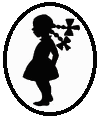

We have some limited information at this time on girl's school uniforms in Russia. We have no information at this time on girls school uniforms in Tsarist Russia. Boys and girls in Soviet Russia used to wear distinctive uniforms. There were differences over time. We are unsure how boys and girls dressed in the early Soviet period. The girls in the 1960s commonly always wore dresses, often blue dresses. The younger girls wore pinafores. Soviet school girls never wore pants. Both boys and girls wore military-styled uniform. The style varied from school to school and over time. The boys and girls uniforms looked quite similar, at least the tops. The most obvious difference was that the girls wore Peter Pan collars and the boys pointed collars. Uniforms appear to have declined or disappeared in modern Russian schools and now jeans are common for both boys and girls. We have, however, few details at this time. A HBC reader, however, tells us that the fancy dress with white hairbows and pinafores has not entirely disappeared in post-Soviet Russia.
We have some limited information at this time on girl's school uniforms over time in Russia. We have no information at this time on girls school uniforms in Tsarist Russia. Russia was a very conservative country. We suspect that the number of girls in secondary schools was rather limited. Boys and girls in Soviet Russia used to wear distinctive uniforms. There were differences over time. We are unsure how boys and girls dressed in the early Soviet period. The girls in the 1960s commonly always wore dresses, often blue dresses. The younger girls wore pinafores. Soviet school girls never wore pants. Both boys and girls wore military-styled uniform. The style varied from school to school and over time. The boys and girls uniforms looked quite similar, at least the tops. The most obvious difference was that the girls wore Peter Pan collars and the boys pointed collars. We have very limited information on uniforms and schoolwear in modern Russia. Uniforms appear to have declined or disappeared in modern Russian schools and now jeans are common for both boys and girls. We have, however, few details at this time. A HBC reader, however, tells us that the fancy dress with white hairbows and pinafores has not entirely disappeared in post-Soviet Russia. Rather they are still worn in some areas, but only on special days.
Children wore school uniforms, both in the Tsarist and Soviet era. Boys wore military-style uniforms, basically a cadey uniform. We note some differences from school to school. I'm not sure what girls wore in the Tsarist era, but girls' education was generally neglected in Tsarist Russia. After the Revolution, girl's education was significantly expanded. Boys uniforms contginued to be military uniforms, but more standardized than furing the Tsarist era. The girls wore blue dresses, often with white pinafores. White hair bows were also ciommon. The dresses appear to be stazndard dark blue dresses with long sleeves. While dark blue seem to be the most common color, we have seen other colors such as brown. The white pinafores and hair bows were especially common on special occassions, but we also see them on regular school days. After the dissolution of the Soviet Union, uniforms were dispensed with, in part because the children stopped wearing them. We note that on special days the girls dress up in the old uniforms, including the white pinafores and hair bows. We are not sure how common this is.
We have very little regional information at this time. We have no information on Tsarist schools. We believe that during the Soviet era that school unifoem regulations were set nationally. Many areas of the Soviet Union were very before, especially before World War II, thus many children outside the major cities may not have been able toi sfford school uniforms. As far as I know, however, the actual regulkations were standard throught the country. After the dissolution of the Soviet Union, the formal Soviet uniforms generally disappeared except on specially occassions. A reader tells us, however, that there are exceptions. Girls still apparently wear the formal uniforms in Transdniestr (autonomuos region within Republic of Moldova). We are not sure why the old Soviet uniforms continue to be worn there.
Related Chronolgy Pages in the Boys' Historical Web Site
[Main Chronology Page]
[The 1900s]
[The 1910s]
[The 1920s]
[The 1930s]
[The 1940s]
[The 1950s]
[The 1960s]
[The 1970s]
Navigate the Relate Boys Historical Clothing Style Pages
[Return to the Main country page]
[Return to the Main Russian page]
[Long pants suits]
[Short pants suits]
[Lederhosen]
[Kneesocks]
[Eton suits]
[Jacket and trousers]
[Blazer
[School sandals]
Navigate the Boys' Historical Clothing Web Page
[Introduction]
[Activities]
[Biographies]
[Chronology]
[Clothing styles]
[Activities]
[Girls]
[Bibliographies]
[Contributions]
[FAQs]
[Glossaries]
[Satellite sites]
[Tools]
[Boys' Clothing Home]
